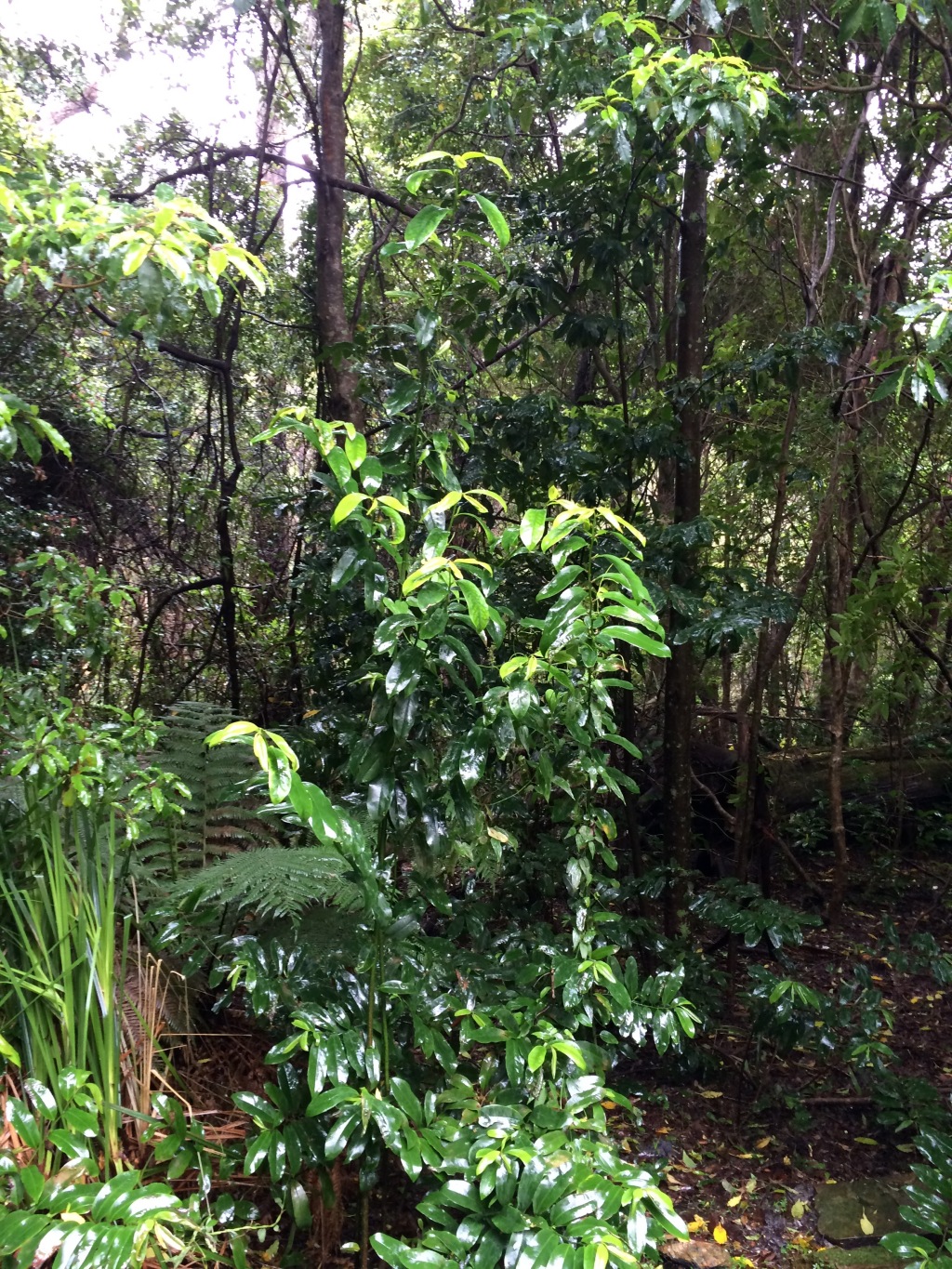Eupomatiaceae
Small glabrous, aromatic trees or shrubs sometimes with tuberous roots (not Victoria); branchlets zigzag. Leaves alternate, distichous, simple, entire, oil dots numerous, minute; stipules absent. Flowers terminal, often on short axillary shoots, solitary or 2 or 3 together, regular, bisexual; sepals and petals not differentiated; perianth cap-like (a conical deciduous calyptra); stamens numerous, spirally arranged in 2–3 rows near the rim of the receptacle, surrounding several rows of petaloid staminodes; carpels numerous, unsealed, immersed in the receptacle; 2–several ovules per carpel; styles absent, stigma feathery, sessile. Aggregate fruit, berry-like, true fruits 1- or 2-seeded achenes surrounded by the enlarged receptacle; seeds numerous, angular, with a small embryo and copious endosperm.
Restricted to rainforest and nearby moist habitats in more open forest in eastern Australia and New Guinea; 1 genus with 2 species (1 endemic).
Some authors interpret the calyptra as being fused petals and sepals (Elliot & Jones 1980-1994) whereas others such as Endress (1984) favour a bract origin.
Foreman, D.B. (1996). Eupomatiaceae. In: Walsh, N.G.; Entwisle, T.J., Flora of Victoria Vol. 3, Dicotyledons Winteraceae to Myrtaceae, pp. 23–24. Inkata Press, Melbourne.
 Spinning
Spinning
